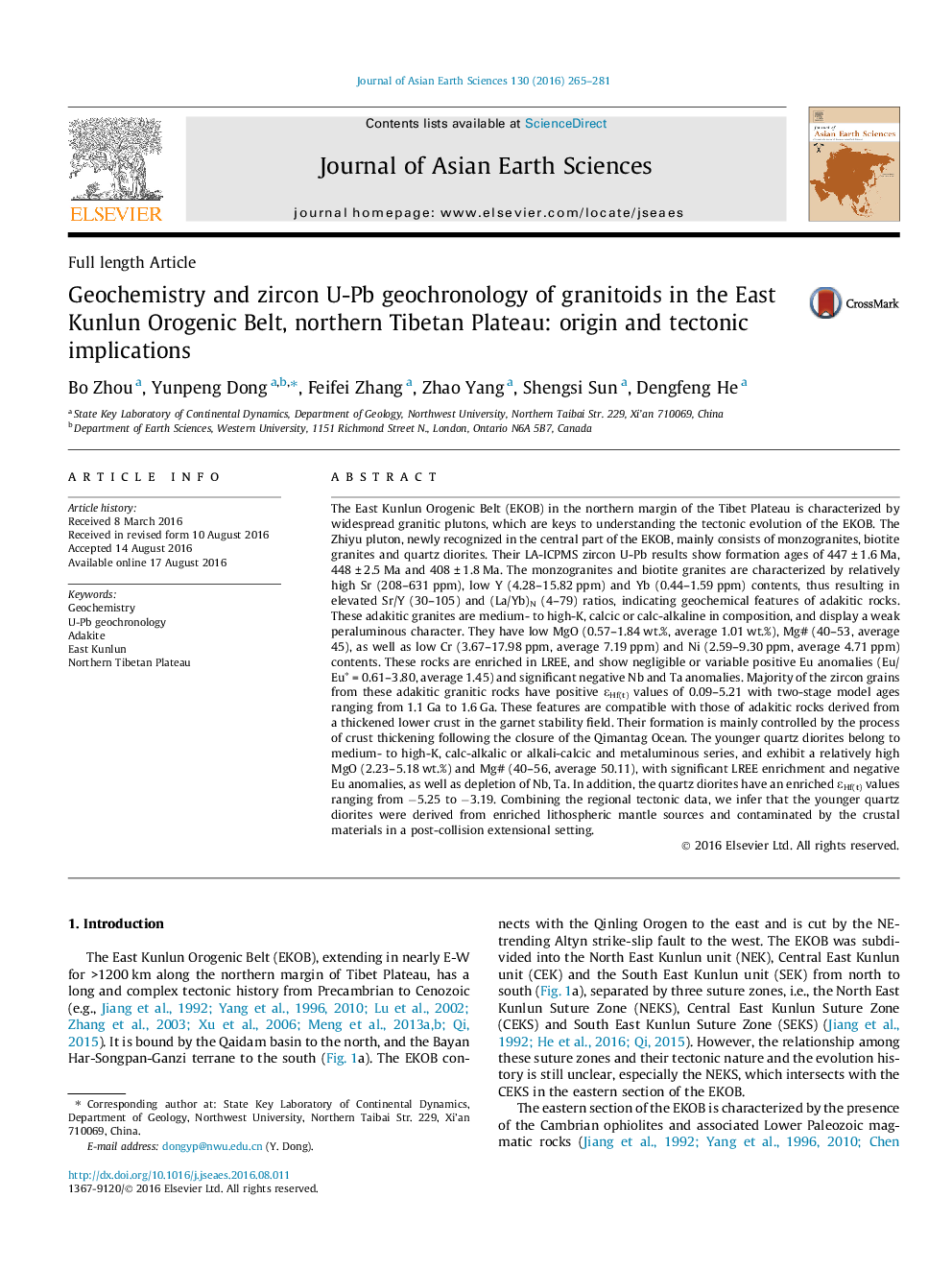| کد مقاله | کد نشریه | سال انتشار | مقاله انگلیسی | نسخه تمام متن |
|---|---|---|---|---|
| 5786226 | 1640341 | 2016 | 17 صفحه PDF | دانلود رایگان |

- Zhiyu granitoids with ages of 447Â Ma, 448Â Ma and 408Â Ma is reported in East Kunlun.
- Zhiyu monzogranites and biotite granites were derived from a thickened lower crust.
- Zhiyu quartz diorites were formed in a post-collision setting.
The East Kunlun Orogenic Belt (EKOB) in the northern margin of the Tibet Plateau is characterized by widespread granitic plutons, which are keys to understanding the tectonic evolution of the EKOB. The Zhiyu pluton, newly recognized in the central part of the EKOB, mainly consists of monzogranites, biotite granites and quartz diorites. Their LA-ICPMS zircon U-Pb results show formation ages of 447 ± 1.6 Ma, 448 ± 2.5 Ma and 408 ± 1.8 Ma. The monzogranites and biotite granites are characterized by relatively high Sr (208-631 ppm), low Y (4.28-15.82 ppm) and Yb (0.44-1.59 ppm) contents, thus resulting in elevated Sr/Y (30-105) and (La/Yb)N (4-79) ratios, indicating geochemical features of adakitic rocks. These adakitic granites are medium- to high-K, calcic or calc-alkaline in composition, and display a weak peraluminous character. They have low MgO (0.57-1.84 wt.%, average 1.01 wt.%), Mg# (40-53, average 45), as well as low Cr (3.67-17.98 ppm, average 7.19 ppm) and Ni (2.59-9.30 ppm, average 4.71 ppm) contents. These rocks are enriched in LREE, and show negligible or variable positive Eu anomalies (Eu/Euâ = 0.61-3.80, average 1.45) and significant negative Nb and Ta anomalies. Majority of the zircon grains from these adakitic granitic rocks have positive εHf(t) values of 0.09-5.21 with two-stage model ages ranging from 1.1 Ga to 1.6 Ga. These features are compatible with those of adakitic rocks derived from a thickened lower crust in the garnet stability field. Their formation is mainly controlled by the process of crust thickening following the closure of the Qimantag Ocean. The younger quartz diorites belong to medium- to high-K, calc-alkalic or alkali-calcic and metaluminous series, and exhibit a relatively high MgO (2.23-5.18 wt.%) and Mg# (40-56, average 50.11), with significant LREE enrichment and negative Eu anomalies, as well as depletion of Nb, Ta. In addition, the quartz diorites have an enriched εHf(t) values ranging from â5.25 to â3.19. Combining the regional tectonic data, we infer that the younger quartz diorites were derived from enriched lithospheric mantle sources and contaminated by the crustal materials in a post-collision extensional setting.
Journal: Journal of Asian Earth Sciences - Volume 130, 15 November 2016, Pages 265-281